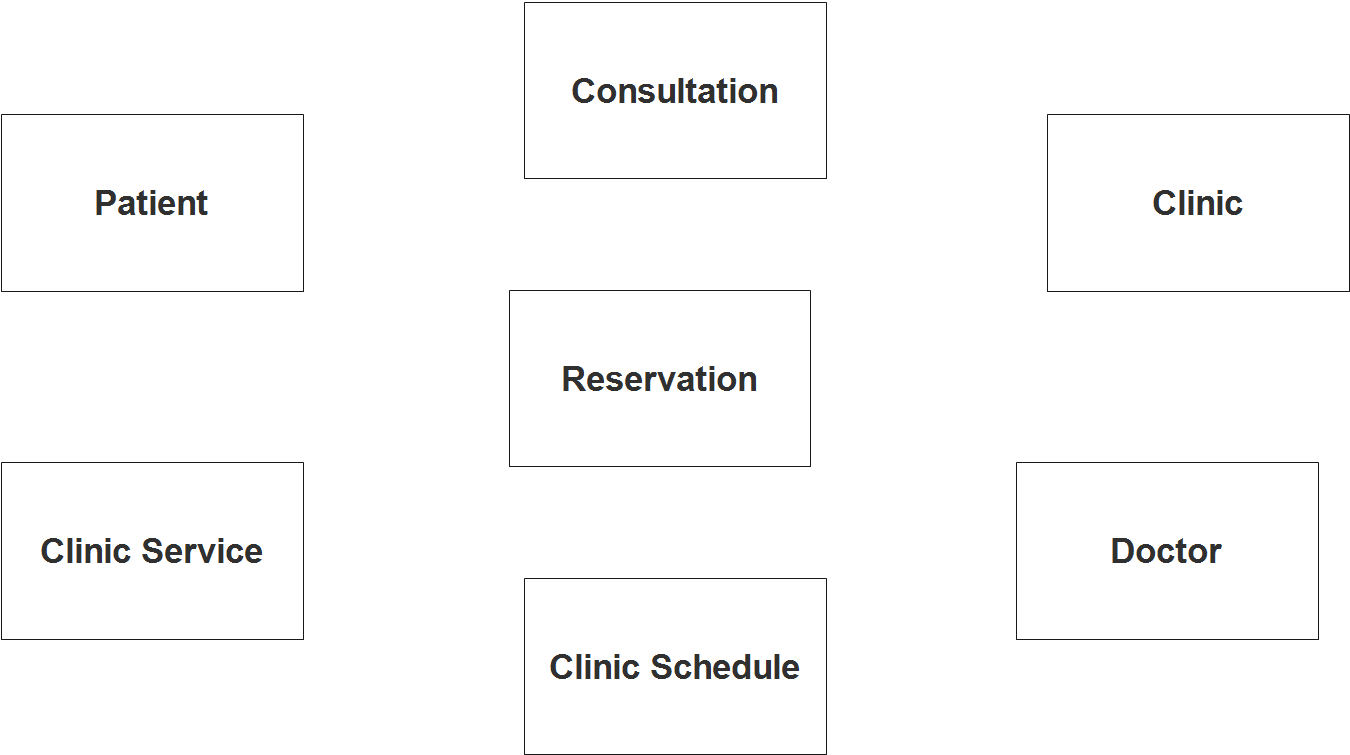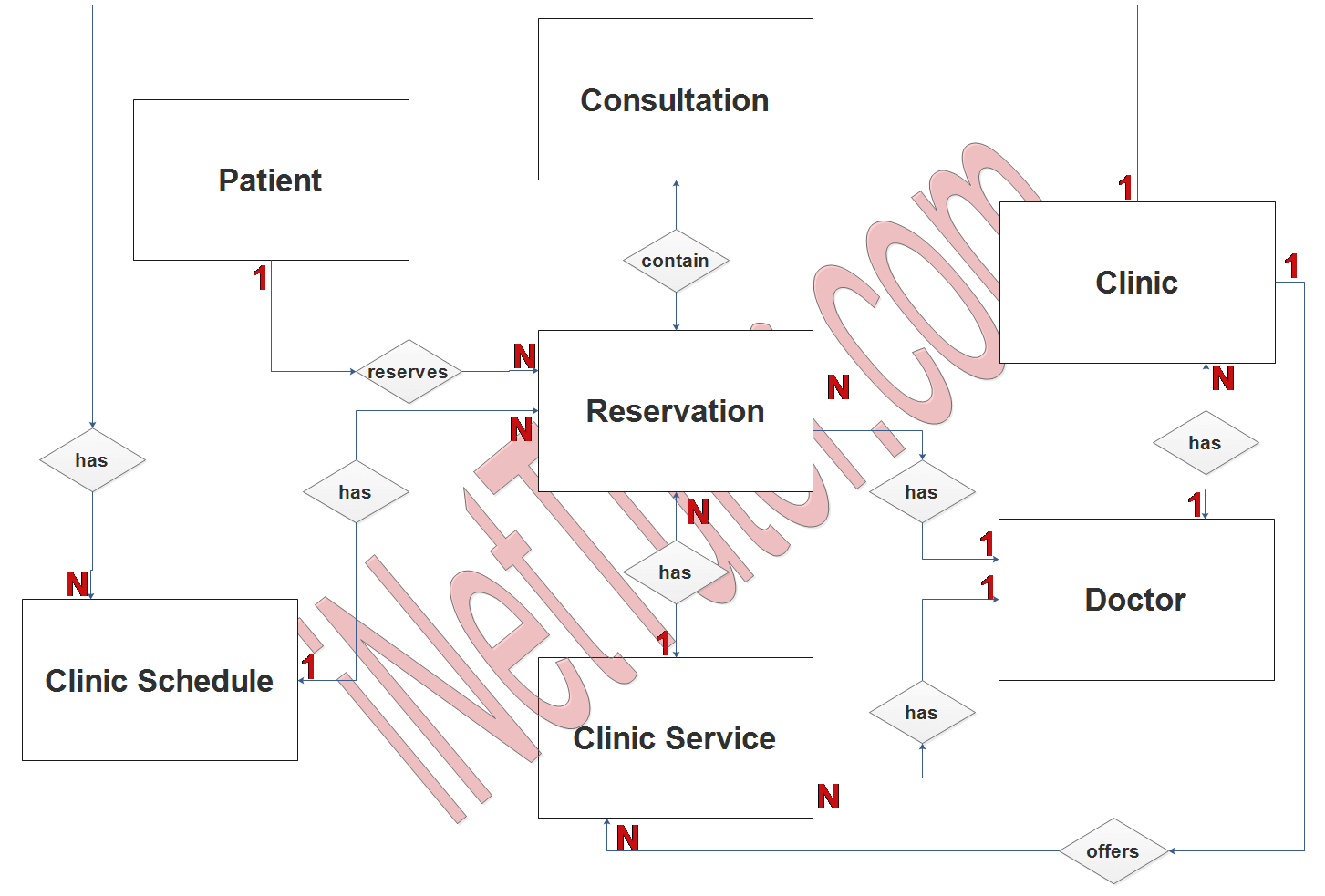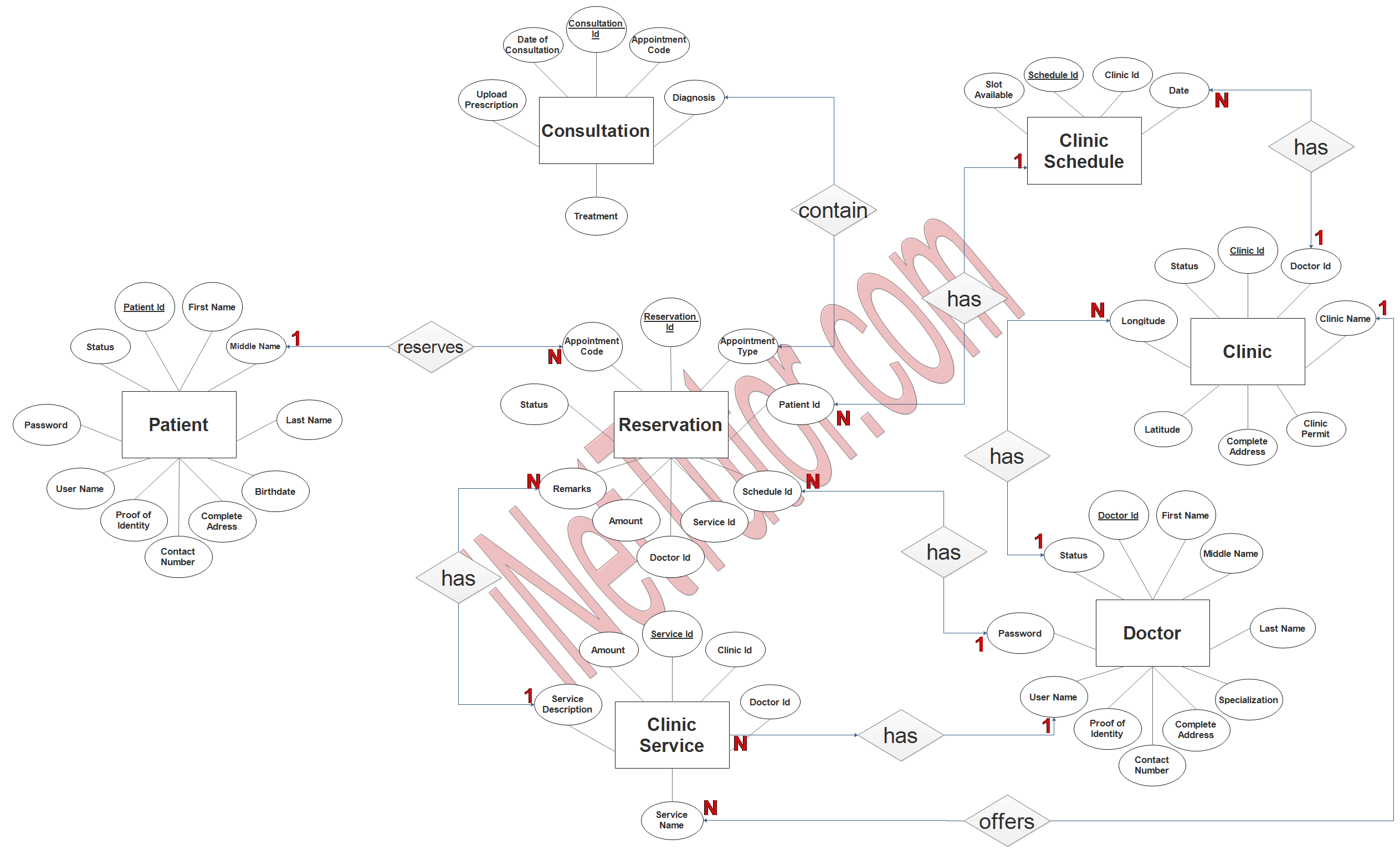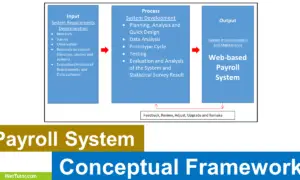Multi Clinic Appointment System ER Diagram
The Multi Clinic Appointment System is a web-based application that allows users to schedule appointments at multiple clinics. It will guide you from beginning to end, step by step, through the process of constructing an entity relationship diagram, commonly known as an ERD, for the Multi Clinic Appointment System project.
Description of the Project
Table of Contents
Healthcare practitioners can organize and arrange appointments for their patients using the Multi Clinic Appointment System, which is a web-based system that they can access from anywhere. Providers may simply view their patients’ appointment histories, manage their appointments, and send appointment reminders to their patients using the Multi Clinic Appointment System. As an added convenience, the Multi Clinic Appointment System includes an easy-to-use customer interface that allows patients to manage their appointments on a self-service basis.
Aiming to be easy, powerful, and economical, the Multi Clinic Appointment System is designed to allow practitioners to devote their time and energy to patient care rather than clerical or administrative responsibilities associated to scheduling and transaction processing.
For more information about the project, please visit the links below:
Multi Clinic Appointment System Free Template Source code in PHP and Bootstrap
Advantages of the Project
An appointment system that includes many clinics has numerous advantages for both healthcare practitioners and patients. A multi-clinic appointment system can provide a number of advantages for healthcare practitioners, including the following:
- Patients’ volume and revenue have increased, and patient care and outcomes have improved.
- The ability to work more efficiently and productively
- Better communication and teamwork between clinics; and Patients’ access to care will be improved as more appointments are made available, and waiting periods for appointments will be reduced. The expenses of administration and management systems will be reduced as a result of the reduction in paperwork.
Patients can benefit from a multi-clinic appointment system in a variety of ways, including the following:
- Increased satisfaction with the quality and experience of healthcare
- Reducing the amount of time patients must wait for appointments (more available appointments)
Multi Clinic Appointment System ERD
The construction of the ER diagram, which will later be used as the basis for the building of the real database that will be used in the system, is the first part of the development of the Multi Clinic Appointment System.
It is our goal to create an entity relationship diagram for the Multi Clinic Appointment System and to discuss the procedures that must be taken in order to create the diagram.
Let us begin with the symbols that are used in the ER Diagram.
The rectangle shape represents the entity being represented. Later on, we will use this entity to create a database table for our Multi Clinic Appointment System.
The oval form represents the attribute being represented. The Multi Clinic Appointment System will have columns or fields for each table, and this will be the case.
The diamond shape represents the nature of a relationship. The relationships between entities will be determined by this. This is often accomplished through the use of a primary key to foreign key relationship.
We will follow the 3 basic rules in creating the ER Diagram.
- Identify all the entities.
- Identify the relationship between entities and
- Add meaningful attributes to our entities.
Step 1. In the Multi Clinic Appointment System we have the following entities:
- Patient
- Consultation
- Reservation
- Clinic
- Clinic Services
- Clinic Schedule
- Doctor
According to our design, there are seven parts to the Faculty Evaluation System. When we build the Faculty Evaluation System database schema, the parts that make up these elements will be the parts of our database tables.
We will now draw the components of the Faculty Evaluation System in the shape of a rectangle, which will represent the system as a whole. The entities identified as operating under the scope of the Faculty Evaluation System are depicted in the graphic below.

Step 2. After we have specified our entities, it is time now to connect or establish a relationship among the entities.

- A patient can process a reservation multiple times (1 to many relationship).
- The clinic can set their schedules several times a week, depending on the availability of the doctor (1 to many relationship).
- The clinic can also offer several services based on the specialization of their doctors (1 to many relationship).
- A doctor can setup multiple clinics as long as it is permitted by the local government unit. Another explanation is that a doctor maybe affiliated with multiple clinics (1 to many relationship).
- A doctor can also offer several services based on their type of licensed or expertise (1 to many relationship).
- The services of the clinic are available to several patients depending on the number specified by the doctor or clinic. (1 to many relationship).
- The doctor can have multiple schedules or appointments as long as it has no conflict (1 to many relationship).
- The patient can also select multiple services to avail as long as it has a slot available (1 to many relationship).
- The clinic can also accept several appointments; then again, it will depend on the availability of the doctors (1 to many relationship).
Step 3. The last part of the ERD process is to add attributes to our entities.

Patient
- Patient ID – primary key represented with underline
- First name
- Middle name
- Last name
- Birthdate
- Complete address
- Contact number
- Proof of identity
- Username
- Password
- Status
Consultation
- Student ID – primary key represented with underline
- Consultation ID – primary key represented with underline
- Appointment code
- Diagnosis
- Treatment
- Upload prescription
- Date of consultation
Reservation
- Reservation ID – primary key represented with underline
- Appointment code
- Appointment type
- Patient ID – foreign key
- Schedule ID – foreign key
- Service ID – foreign key
- Doctor ID – foreign key
- Amount
- Remarks
- Status
Clinic
- Clinic ID – primary key represented with underline
- Doctor ID – foreign key
- Clinic name
- Clinic permit
- Complete address
- Latitude
- Longitude
- Status
Clinic Services
- Service ID – primary key represented with underline
- Clinic ID – foreign key
- Doctor ID – foreign key
- Service name
- Service description
- Amount
Clinic Schedule
- Schedule ID – primary key represented with underline
- Clinic ID – foreign key
- Date
- Slots available
Doctor
- Doctor ID – primary key represented with underline
- First name
- Middle name
- Last name
- Specialization
- Birthdate
- Complete address
- Contact number
- Proof of identity
- Username
- Password
- Status
Summary
A multi clinic appointment system is a computer program that lets people make appointments at multiple clinics at the same time. The system has a central database that stores information about the patients, the clinics, and the appointments. This database is called a “database.” The system also has a web interface that patients can use to see when appointments are available and to make them.
Before we can start to develop our system, first we need to document our project. The ER Diagram is a way to document our project in order to proceed to the next part which is to build the project in an actual database.
In order for the developers to design the real database for the project, they will use the ER Diagram as a guide and as a source of reference. If you have learned anything from our article on how to develop and construct an ER Diagram for Multi Clinic Appointment System, please share it with others.
You may visit our Facebook page for more information, inquiries, and comments. Please subscribe also to our YouTube Channel to receive free capstone projects resources and computer programming tutorials.
Hire our team to do the project.
Related Links and Articles:
Multi Clinic Appointment System Database Design Tutorial
Vehicle Parking Management System ER Diagram
Fire Safety Inspection Certificate System ER Diagram
Medical Record and Billing System ER Diagram


